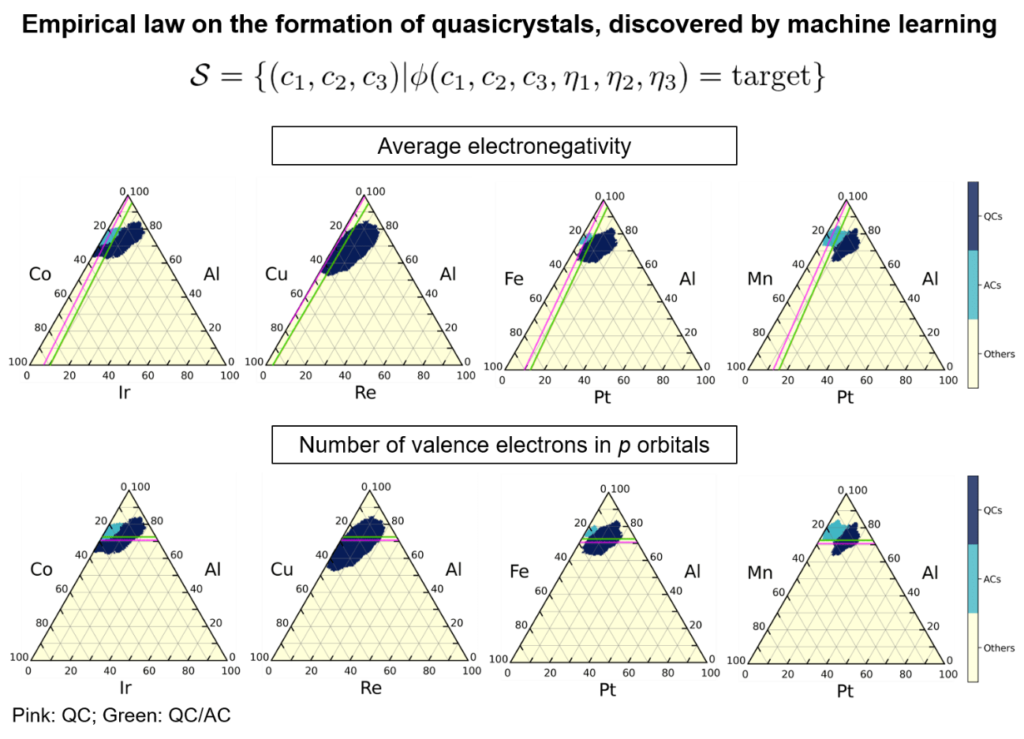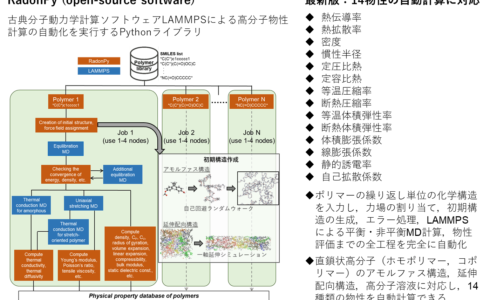Search for New Quasicrystalsusing Machine Learning
Accelerating the discovery of new quasicrystals based on data science
Quasicrystals are a class of materials that do not have the translational symmetry of ordinary periodic crystals, but have a high degree of order in their atomic arrangement. The first quasicrystal was discovered by Schechtman in 1984. Over the next 35 years, more than 100 types of quasicrystals were found, and quasicrystals were placed as the third class of solids along with ordinary crystals and amorphous. However, the pace of the discovery has slowed significantly in recent years. We are participating in the Grant-in-Aid for Scientific Research on Innovative Areas, “Hypermaterials: Innovation of Materials Science in Hyperspace”), which started in 2019 (Prof. Ryuji Tamura, Tokyo University of Science). We will accelerate the discovery of new quasicrystals by introducing machine learning techniques to the field
Prediction of chemical compositions to form quasicrystals
We tackled the problem of predicting quasicrystals using a simple workflow of supervised learning. The input variable of the model is the chemical composition. The output variables represent class labels indicating “quasicrystals”, “approximantcrystals”, and “others” including ordinary periodic crystals. As training data, we used the chemical compositions of quasicrystals, approximants, and ordinary crystals that have been discovered so far. We evaluated the predictability of machine learning models for the three-class classification task. The predicted quasicrystalline phases were compared with known experimental phase diagrams, and the precision and recall of the phase prediction reached0.793 and 0.714, respectively. We aim to use this model to narrow down the candidate compositions that form quasicrystals and approximants.
Discovery of the laws of physics
Furthermore, by extracting the input-output rules inherent in the black-box model of machine learning, we have uncovered rule-of-thumbs on the formation of quasicrystalline phases. These rules are expressed in five equations for the van der Waals radius of consistent elements and the itinerant valence electron concentration. These conditions provide design guidelines for the search for new quasicrystals. This may open the door to a better understanding of the stability of quasicrystals, a central issue in condensed matter physics.
Towards discovery of innovative quasicrystals
With this work, we have taken the first step toward realizing quasicrystal discovery through data science. Wea re now using our model in the synthetization of new quasicrystals. During nearly 35 years after the discovery of the first quasicrystal, little is known about the formation mechanism of quasicrystals. Data science may make a significant contribution to solving this unsolved issue in quasicrystal research.

Figure: Formation rules on quasicrystalline phases that was discovered by machine learning

